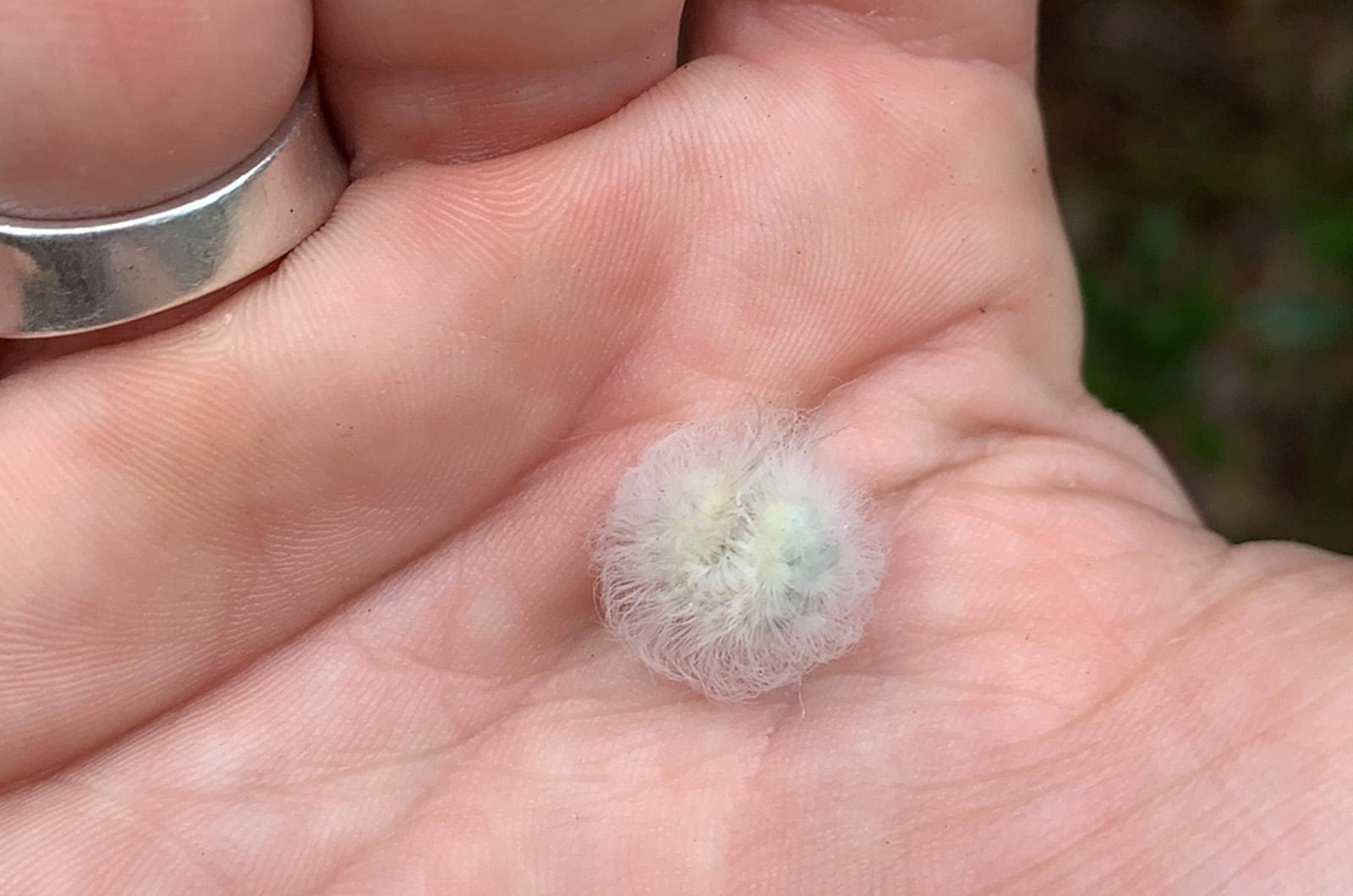It is flannel season.
Since the weather hasn’t yet turned cool and the humidity is still stifling, I am not ready to bring out my soft and warm plaid shirts. There is another flannel afoot — or in this case afeet — this fall.
The black-waved flannel moth caterpillar is crawling about on its seven pairs of prolegs. In the caterpillar kingdom, seven is significant. Most caterpillars have five or fewer prolegs, so the black-waved flannel moth is two feet ahead of its associates.
It is not this caterpillar’s feet that find the most fame. The body of this beast is covered with hairs that can cause much consternation.
Last week, I found a white fuzzy ball on a leaf in the woods. As I wanted to investigate and identify, I picked it up and raised it to my face for an up-close and personal encounter.
This was a very bad idea, I’ve come to understand. So, it is “do as I say and not as I do” in terms of scrutinizing any member of the flannel moth family. My tender touch could have been a disaster, since flannel moths have particularly-painful stinging cells on their hairs that inject venom. The venom can induce skin irritation or the results could be much worse, causing severe pain that radiates through the body, nausea, muscle pains and even seizures.
While the former symptoms of contact are more common, those latter indications should strike fear in the fingers, toes and other body parts of those that want to reach out and touch these interesting insects.
The severity of the response can also depend on the age of the caterpillar. The one that I encountered had rolled itself up in a ball for protection as it was more afraid of me than I was of it. This was a younger caterpillar whose hairs were wispy and fine. As the caterpillar grows, those wispy hairs give way to shorter stinging hairs, called setae, that replace them and can do much more damage. The young’uns’ ability to irritate is thus greatly reduced.
Black-waved flannel moths are members of the genus megalopyge. That genus name has Greek roots, with mega meaning large and pigydium, which is rump. Though I don’t know why this species name translates into large rump, I do find it amusing.
Other members of the genus are the ones that are more likely to cause the latter symptoms described above. The southern flannel moth is the more dangerous relative, and is also called a puss or asp caterpillar. That species has been found as far north as New Jersey but don’t be too complacent, since we are seeing southern species move north with warmer temperatures and other effects of climate change.
Caterpillar season is now in full swing, so be prepared to be amazed at all of the varieties you can encounter as you go about your day.
And remember: outdoors is not a petting zoo, so at times and with some species, refrain from touching. All are fascinating and worth investigation, though using your eyes only is surely the safest way to see them.
Suzan Bellincampi is Islands director for Felix Neck Wildlife Sanctuary in Edgartown and the Nantucket Wildlife Sanctuaries. She is also the author of Martha’s Vineyard: A Field Guide to Island Nature and The Nature of Martha’s Vineyard.




Comments
Comment policy »